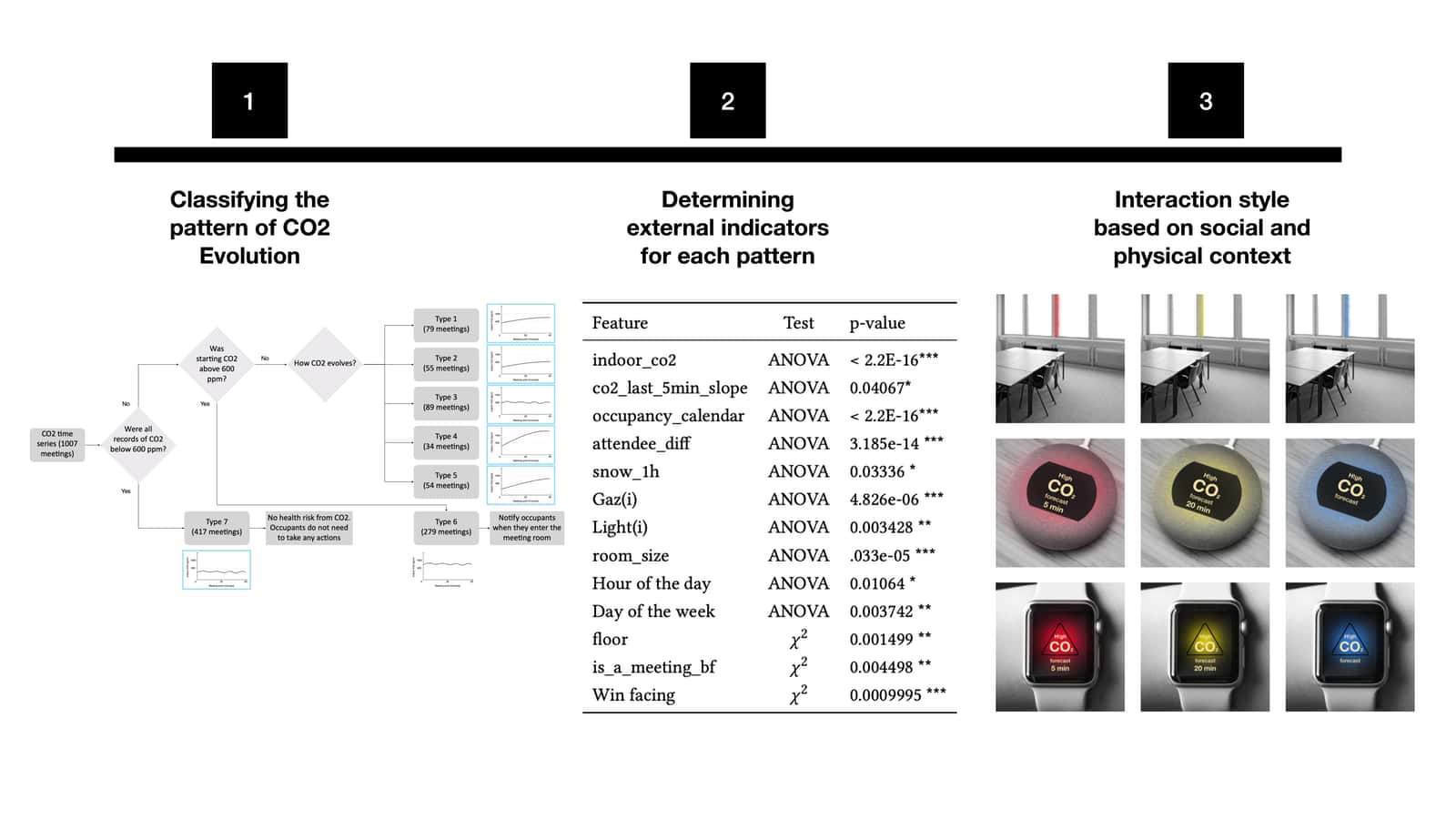Predictive Models and Adaptive Design Proposals
Downloads
DOI:
https://doi.org/10.47982/spool.2022.1.05Keywords:
Indoor Environmental Qualities, Quantified Buildings, Human-Building Interaction, Indoor Air Quality, Predictive ModelsAbstract
The high concentration of air pollutants in indoor environments can have a remarkable adverse impact on health and well-being, cognitive performance and productivity. Indoor air pollutants are especially problematic in naturally ventilated shared spaces such as classrooms and meeting rooms, where human-generated pollutants can rise rapidly. When the inhabitants are exposed to indoor air pollution, recovering from its ramifications takes time and harms their well-being in the long run. In our approach, we seek to predict and prevent such hazardous situations instead of rectifying them after they happen. The prediction and prevention are accomplished through algorithms that can learn from the evolution of air pollutants and other variables to indicate whether or not a high level of pollution is forecast. We present two AI-enabled methods, one providing the forecast for the concentration level of carbon dioxide in the next 5 and 20 minutes with 86% and 92% accuracy. The second algorithm provides predictive indicators about how the CO2 level will evolve during the upcoming session (meeting or a course) before the session starts. We will discuss design implications and present design proposals on how these methods can inform interactive solutions for preventing high concentrations of indoor air pollutants.
How to Cite
Published
Issue
Section
Categories
References
Alavi, H. S., Verma, H., Papinutto, M., & Lalanne, D. (2017). Comfort: A Coordinate of User Experience in Interactive Built Environments. Human-Computer Interaction – INTERACT 2017, 247–257. https://doi.org/10.1007/978-3-319-67687-6_16
Apte, M. G., & Erdmann, C. A. (2002). Indoor carbon dioxide concentrations, VOCs, environmental sensitivity association with mucous membrane and lower respiratory sick building syndrome symptoms in the BASE study: analyses of the 100 building dataset. Lawrence Berkeley National Laboratory (LBNL) Report, 51570.
Burge, P. S. (2004). Sick building syndrome. Occupational and Environmental Medicine, 61(2), 185–190. https://doi.org/10.1136/oem.2003.008813
Erdmann, C. A., & Apte, M. G. (2004). Mucous membrane and lower respiratory building related symptoms in relation to indoor carbon dioxide concentrations in the 100-building BASE dataset. Indoor Air, 14(s8), 127–134. https://doi.org/10.1111/j.1600-0668.2004.00298.x
Fang, L., Clausen, G., & Fanger, P. O. (1998). Impact of temperature and humidity on the perception of indoor air quality. Indoor air, 8(2), 80-90.
Fisk, W. J. (2010). CO2 monitoring for demand controlled ventilation in commercial buildings. https://escholarship.org/uc/item/4bk4x479
Frontczak, M., & Wargocki, P. (2011). Literature survey on how different factors influence human comfort in indoor environments. Building and Environment, 46(4), 922–937. https://doi.org/10.1016/j.buildenv.2010.10.021
Griffiths, M., & Eftekhari, M. (2008). Control of CO2 in a naturally ventilated classroom. Energy and Buildings, 40(4), 556–560. https://doi.org/10.1016/j.enbuild.2007.04.013
Hsu, Y. C., Cross, J., Dille, P., Tasota, M., Dias, B., Sargent, R., Huang, T. H. K., & Nourbakhsh, I. (2019). Smell Pittsburgh. Proceedings of the 24th International Conference on Intelligent User Interfaces. https://doi.org/10.1145/3301275.3302293
Meurer, R. S., Frohlich, A. A., & Hubner, J. F. (2018). Ambient Intelligence for the Internet of Things Through Context-Awareness. 2018 International Symposium on Rapid System Prototyping (RSP). https://doi.org/10.1109/rsp.2018.8631989
Redlich, C. A., Sparer, J., & Cullen, M. R. (1997). Sick-building syndrome. The Lancet, 349(9057), 1013–1016. https://doi.org/10.1016/s0140-6736(96)07220-0
Swiss Federal Office of Public Health. (2016, January 5). Insucient air quality in two- thirds of the classrooms in Switzerland. The Federal Council. https://www.admin.ch/gov/fr/accueil/ documentation/communiques.msg-id-74177.html.
Zhong, S., Lalanne, D., & Alavi, H. (2021). The Complexity of Indoor Air Quality Forecasting and the Simplicity of Interacting with It – A Case Study of 1007 Office Meetings. Proceedings of the 2021 CHI Conference on Human Factors in Computing Systems. https://doi.org/10.1145/3411764.3445524





